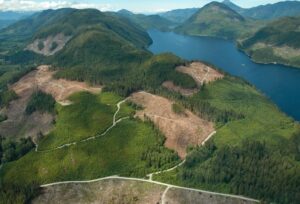 CORVALLIS, Oregon – Rising wildfire risk in the Pacific Northwest combined with notoriously volatile timber pricing may lower forestland values by as much as 50% and persuade plantation owners to harvest trees much earlier than planned, a new analysis of Douglas-fir forests shows. Under the worst-case scenarios, modeling by researchers at Oregon State University suggests harvesting trees at 24 years would make the most economic sense. Absent wildfire risk, the optimal age would be 65 years. Generally, private landowners harvest between those two ages, but it’s not a surprise for the optimal rotation age to go down in these scenarios, the scientists say. “Basically, under high wildfire risk that rises with stand age, every year you wait to harvest you’re rolling the dice,” said Mindy Crandall, at OSU College of Forestry. Earlier harvesting reduces both long-term timber revenue and carbon storage potential, as well as impacting wood quality, adds study co-author Andres Susaeta.
CORVALLIS, Oregon – Rising wildfire risk in the Pacific Northwest combined with notoriously volatile timber pricing may lower forestland values by as much as 50% and persuade plantation owners to harvest trees much earlier than planned, a new analysis of Douglas-fir forests shows. Under the worst-case scenarios, modeling by researchers at Oregon State University suggests harvesting trees at 24 years would make the most economic sense. Absent wildfire risk, the optimal age would be 65 years. Generally, private landowners harvest between those two ages, but it’s not a surprise for the optimal rotation age to go down in these scenarios, the scientists say. “Basically, under high wildfire risk that rises with stand age, every year you wait to harvest you’re rolling the dice,” said Mindy Crandall, at OSU College of Forestry. Earlier harvesting reduces both long-term timber revenue and carbon storage potential, as well as impacting wood quality, adds study co-author Andres Susaeta.